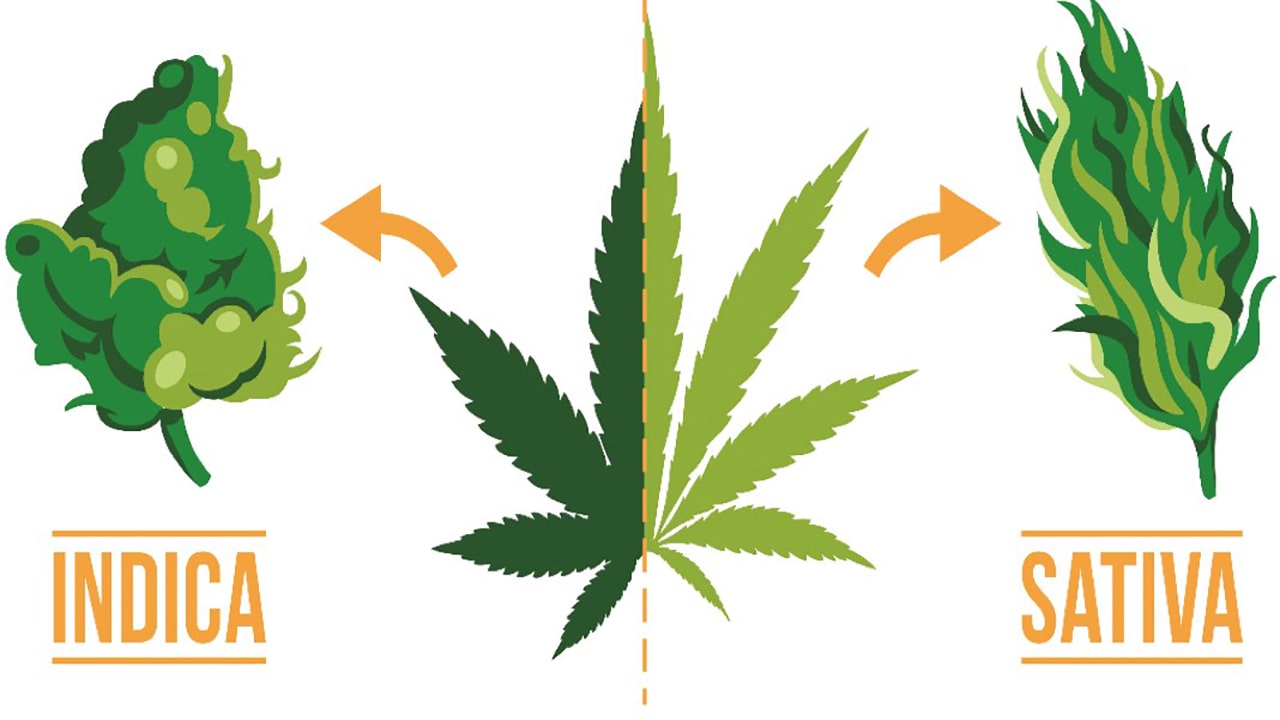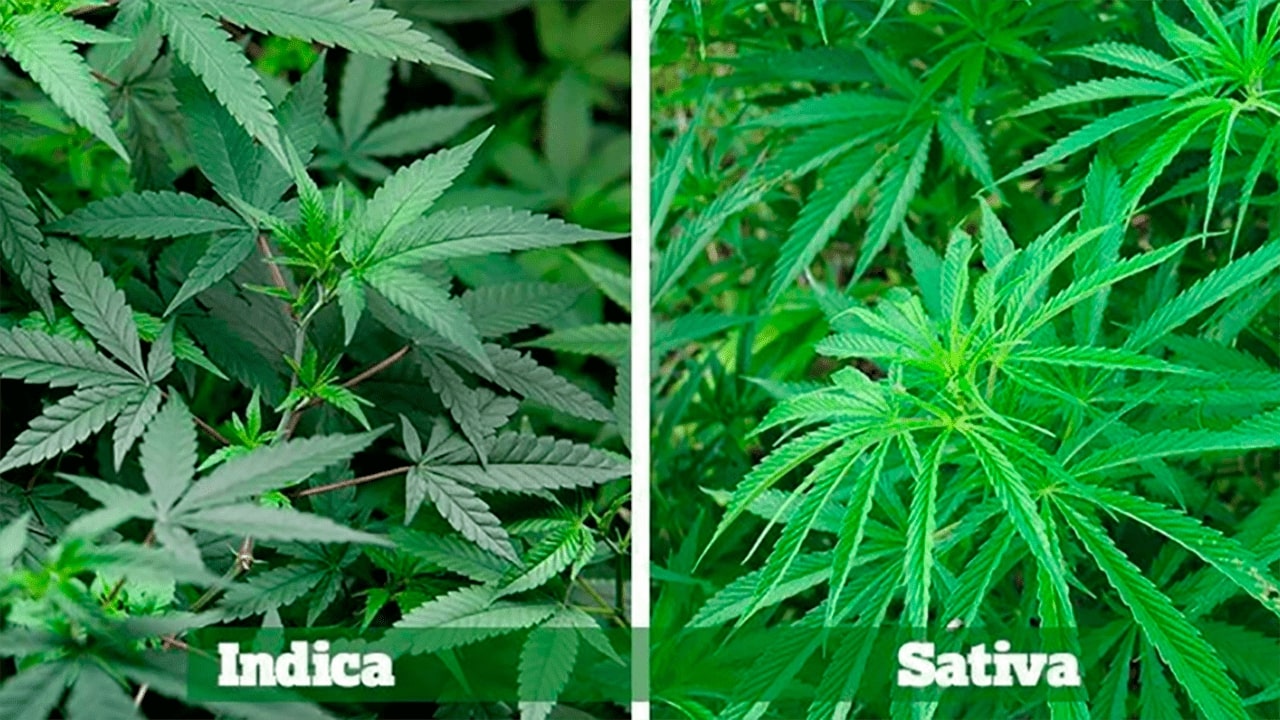
რა განსხვავებაა ინდიკასა და სატივას შტამებს შორის?
კანაფი კაცობრიობასთან ათასობით წელია არსებობს და გამოიყენება მედიცინაში, რელიგიასა და რეკრეაციულ მიზნებში. ამ მცენარეს განსაკუთრებული თერაპიული და ფსიქოაქტიური თვისებები აქვს. არსებობს სამი ძირითადი ქვესახეობა - ინდიკა, სატივა და რუდერალისი. თითოეულ მათგანს თავისი მახასიათებლები აქვს. თანამედროვე კანაფის ჯიშები, განსაკუთრებით კომერციული კულტივირებისთვის გამოყვანილი, ჩვეულებრივ ჰიბრიდებია, რომლებიც სხვადასხვა პროპორციით აერთიანებენ რამდენიმე ქვესახეობის გენებს.
ჯიშს ჩვეულებრივ სატივა ეწოდება, თუ გენეტიკის დომინანტური წილი ამ ქვესახეობას ეკუთვნის - ჩვეულებრივ 70-80% და მეტი. ინდიკა დომინანტური ინდიკას გენეტიკის მქონე მცენარეებად ითვლება. რაც შეეხება რუდერალისს, ის ყველაზე ხშირად გამოიყენება ექსკლუზიურად ჯიშს ავტოყვავილობის თვისების მისაცემად, სხვა შემთხვევაში კი დიდ ინტერესს არ იწვევს.

რა არის კანაფის ადგილობრივი ჯიშები?
მიუხედავად იმისა, რომ თანამედროვე კანაფის ჯიშების უმეტესობა ხელოვნურად გამოყვანილი ჰიბრიდებია, ბუნებაში მაინც არსებობს ე.წ. ლანდრასები - ჯიშები „სუფთა“ გენეტიკით, ექსკლუზიურად ინდიკა ან სატივა. ეს ჯიშები საუკუნეების განმავლობაში ჩამოყალიბდა კონკრეტული რეგიონების კლიმატური და გეოგრაფიული პირობების გავლენით, ადამიანის ჩარევის გარეშე.
ამ სუფთა ფორმებიდან ბევრი შემდგომში მსოფლიოს სხვა ნაწილებშიც შემოიტანეს. თავდაპირველად, ველური კანაფის გავრცელება შეზღუდული იყო - ძირითადად ცენტრალურ აზიასა და ახლო აღმოსავლეთში. დღეს კანაფი ყველა კონტინენტზე გვხვდება, შესაძლოა ანტარქტიდის გარდა. თუმცა აქაც მხოლოდ გამოცნობა შეიძლება - ვინ იცის, შესაძლოა პოლარულმა მკვლევარებმა სამეცნიერო მიზნებისთვის მაინც სცადეს მცენარის კულტივირება ასეთ ექსტრემალურ გარემოშიც კი.
რატომ გვჭირდება ინდიკასა და სატივას ადგილობრივი ჯიშები?
სუფთა ჯიშები თანამედროვე სელექციაში მნიშვნელოვან როლს ასრულებენ. ისინი წარმოადგენენ გენეტიკურ ბაზას სასურველი თვისებების მქონე ახალი უნიკალური ჰიბრიდების შესაქმნელად. ჰიბრიდების აქტიური მოშენება შედარებით ცოტა ხნის წინ დაიწყო - მხოლოდ ბოლო რამდენიმე ათწლეულის განმავლობაში გახდა ეს პრაქტიკა ფართოდ გავრცელებული. კანაფის მოხმარების ათასწლიანი ისტორიის სტანდარტებით, ეს მხოლოდ ერთი წამია.
შტამების თანამედროვე მრავალფეროვნება სელექციონერების გულმოდგინე შრომის შედეგია, რომლებმაც შეისწავლეს ადგილობრივი ჯიშები მთელ მსოფლიოში და შემდეგ შექმნეს ჰიბრიდები მათ საფუძველზე. თანდათანობით, მოშენების მეთოდები უფრო ზუსტი და დახვეწილი გახდა. მაგალითად, მისისიპის უნივერსიტეტის ერთ-ერთმა კვლევამ აჩვენა, რომ თანამედროვე კანაფის შტამებში THC-ის შემცველობა ათჯერ აღემატება მარიხუანას 1960-იანი წლებისთვის დამახასიათებელ დონეს.

სატივას მახასიათებლები
სატივას შტამებს შორის ძირითადი განსხვავებები რამდენიმე ასპექტშია:
- წარმოშობა. სატივას შტამების უმეტესობა სამხრეთ ამერიკიდან, მექსიკიდან და სამხრეთ-აღმოსავლეთ აზიიდან მოდის. ეს მცენარეები იდეალურად ეგუებიან ცხელ ეკვატორულ კლიმატს.
- გარეგნობა და მორფოლოგია. სატივას ბუჩქები, როგორც წესი, ძალიან მაღალია, ზოგიერთი ჯიში შეიძლება 3 მეტრამდე სიმაღლეს აღწევდეს. მათ აქვთ გრძელი კვანძთაშორისები და „მსუბუქი“ კვირტები. სატივას ფოთლები მოგრძო და ვიწროა.
- ეფექტი. სატივას აქვს გამამხნევებელი და ეიფორიული ეფექტი, ასტიმულირებს აქტივობას და ხელს უწყობს შემოქმედებით აზროვნებას.
სამკურნალო თვისებები: სამკურნალო პოტენციალის მიუხედავად, სატივა უფრო ხშირად გამოიყენება რეკრეაციული მიზნებისთვის, ვიდრე სამედიცინო მიზნებისთვის, რადგან მისი თერაპიული გამოყენება შეზღუდულია.
ინდიკას წარმოშობა და გარეგნობა
ინდიკას ჯიშები სატივებისგან თითქმის ყველა ძირითადი მახასიათებლით განსხვავდება. ინდიკას სამშობლო, ძირითადად, ინდოეთი და პაკისტანია, განსაკუთრებით ჰინდუ-კუშის მთიანი რეგიონი. ზოგიერთ ინდიკა-დომინანტურ შტამში სახელწოდება „კუში“ მის ისტორიულ სამშობლოს ეხება. ინდიკა კარგად ეგუება მთის მკაცრ პირობებს და სატივასთან შედარებით გაცილებით მდგრადია.
ინდიკა განსხვავებულად გამოიყურება. ისინი მოკლე, მტკიცე მცენარეებია მოკლე კვანძთაშორისებით, რომლებიც ხშირად ერთ მეტრს არ აღემატება სიმაღლეში. ფოთლები სატივასთან შედარებით უფრო ფართოა, ხოლო კვირტები მკვრივი და ფისოვანია.
ინდიკას ეფექტები და სამკურნალო თვისებები
ინდიკას აქვს დამამშვიდებელი ეფექტი, რომელიც ხელს უწყობს ღრმა რელაქსაციას როგორც ფიზიკურად, ასევე გონებრივად. ზოგიერთ მომხმარებელს შეიძლება განუვითარდეს ძილიანობა და აპათია, რასაც ზოგჯერ „დივნის“ ეფექტს უწოდებენ. თუმცა, ბევრი ინდიკას ანიჭებს უპირატესობას მისი ძლიერი რელაქსაციისა და ეიფორიის გამოწვევის უნარის გამო, რაც განსხვავდება სატივას ენერგიული ეფექტებისგან.
ინდიკას ასევე მნიშვნელოვანი სამედიცინო პოტენციალი აქვს. კანაფის სხვადასხვა დაავადების სამკურნალოდ გამოყენების შესახებ ნებისმიერი ხსენება ყველაზე ხშირად ეხება ინდიკა-დომინანტურ შტამებს, განსაკუთრებით მათ, რომლებიც შეიცავს CBD-ს მაღალ დონეს.
სატივა-ინდიკას ჰიბრიდები
სატივასა და ინდიკას შორის შესამჩნევი განსხვავებების მიუხედავად, არსებობს ჰიბრიდული შტამები 50:50 ან 60:40 გენების თანაფარდობით. ეს შტამები აერთიანებს ორივე სახეობის მახასიათებლებს, ქმნის უნიკალურ ეფექტებსა და გარეგნობას. ასეთ ჰიბრიდებში, ოსტატ სელექციონერებს შეუძლიათ გააერთიანონ სხვადასხვა თვისებები, რაც უამრავ შესაძლებლობას იძლევა ახალი, უჩვეულო შტამების შესაქმნელად.


